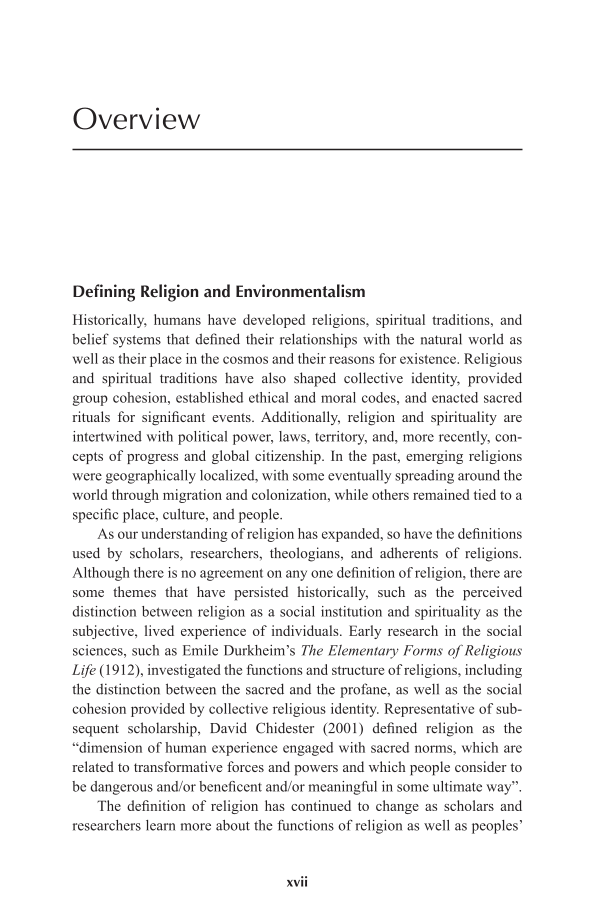xvii Overview Defining Religion and Environmentalism Historically, humans have developed religions, spiritual traditions, and belief systems that defined their relationships with the natural world as well as their place in the cosmos and their reasons for existence. Religious and spiritual traditions have also shaped collective identity, provided group cohesion, established ethical and moral codes, and enacted sacred rituals for significant events. Additionally, religion and spirituality are intertwined with political power, laws, territory, and, more recently, con- cepts of progress and global citizenship. In the past, emerging religions were geographically localized, with some eventually spreading around the world through migration and colonization, while others remained tied to a specific place, culture, and people. As our understanding of religion has expanded, so have the definitions used by scholars, researchers, theologians, and adherents of religions. Although there is no agreement on any one definition of religion, there are some themes that have persisted historically, such as the perceived distinction between religion as a social institution and spirituality as the subjective, lived experience of individuals. Early research in the social sciences, such as Emile Durkheim’s The Elementary Forms of Religious Life (1912), investigated the functions and structure of religions, including the distinction between the sacred and the profane, as well as the social cohesion provided by collective religious identity. Representative of sub- sequent scholarship, David Chidester (2001) defined religion as the “dimension of human experience engaged with sacred norms, which are related to transformative forces and powers and which people consider to be dangerous and/or beneficent and/or meaningful in some ultimate way”. The definition of religion has continued to change as scholars and researchers learn more about the functions of religion as well as peoples’
Document Details My Account Print multiple pages
Print
You have printed 0 times in the last 24 hours.
Your print count will reset on at .
You may print 0 more time(s) before then.
You may print a maximum of 0 pages at a time.






































































































































































































































